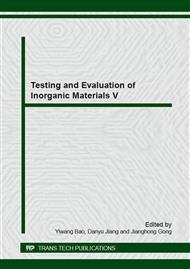p.130
p.136
p.140
p.145
p.149
p.154
p.159
p.165
p.169
Calcium Carbonate Bio-Deposition Technique by Using Fine Waste Mortar Particles as Bacteria-Immobilization Medium
Abstract:
A new immobilization technique that encapsulates B. pasteurii in the fine waste cement mortar particles (FWM) was being investigated to induce CaCO3 precipitation in reducing porosity and refining pore size of old cement mortar (OCM), where FWM particles were crushed from old cement concrete and passed through a size of 5 mm sieve. The capillary water absorption test (CWA) and scanning electron microscopy (SEM) were carried out to evaluate the pore-refining effect of this bio-treated methods. X-ray diffraction analysis (XRD) was used to analyze the morphology and the composition of the treated OCM. The results showed that a larger quantity of calcium carbonate bio-depositions were formed and filled the pores of OCM. As a result, the capillary water absorption was decreased by 47% compared with untreated-OCM, respectively.
Info:
Periodical:
Pages:
149-153
Citation:
Online since:
November 2014
Authors:
Price:
Сopyright:
© 2015 Trans Tech Publications Ltd. All Rights Reserved
Share:
Citation:


